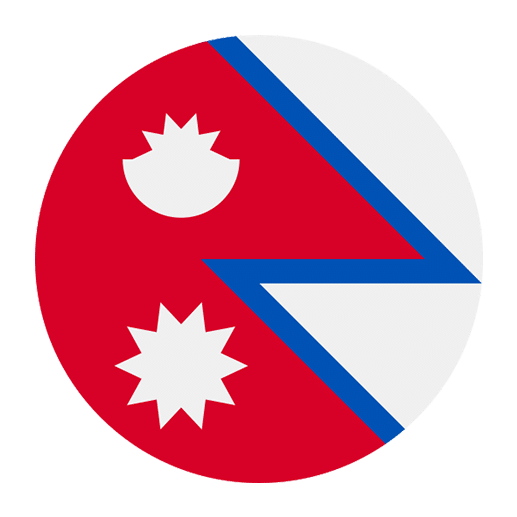Learning a new language can be a rewarding and enriching experience, and Nepali is no exception. As you dive into the intricacies of Nepali grammar, one important aspect to master is adjective agreement. This refers to the way adjectives change form to match the nouns they describe in terms of number and gender. In this article, we will explore the rules and patterns of adjective agreement in Nepali, providing you with a solid foundation to enhance your understanding and fluency.
Understanding Adjective Agreement in Nepali
In Nepali, adjectives must agree with the nouns they modify in both number (singular or plural) and gender (masculine or feminine). This agreement helps to maintain grammatical coherence and clarity in sentences. Unlike in English, where adjectives typically remain unchanged regardless of the noun, Nepali adjectives are inflected to correspond with the noun’s characteristics.
Gender Agreement
Nepali nouns are classified into two genders: masculine and feminine. Adjectives must agree with the gender of the noun they describe. Let’s break this down further:
Masculine Nouns: If the noun is masculine, the adjective must also take a masculine form. For example:
– राम्रो किताब (ramro kitaab) – good book (masculine)
Feminine Nouns: If the noun is feminine, the adjective must take a feminine form. For example:
– राम्री केटी (ramri keTi) – beautiful girl (feminine)
To help identify the gender of a noun, it’s useful to know that many masculine nouns in Nepali end in -ा (aa) and many feminine nouns end in -ी (ii). However, there are exceptions, and it’s important to familiarize yourself with common nouns and their genders.
Number Agreement
In addition to gender, adjectives in Nepali must also agree with the number of the noun they modify. This means that adjectives take different forms depending on whether the noun is singular or plural.
Singular Nouns: When describing a singular noun, the adjective remains in its base form. For example:
– ठूलो घर (thulo ghar) – big house (singular)
Plural Nouns: When describing a plural noun, the adjective must be inflected to match the plural form of the noun. In Nepali, plural nouns often end in -हरू (haru). For example:
– ठूला घरहरू (thula gharharu) – big houses (plural)
Adjective Forms and Patterns
Understanding how adjectives change based on gender and number is crucial for mastering Nepali grammar. Below are some common patterns and examples to illustrate these changes.
Masculine and Feminine Forms
Many adjectives in Nepali have distinct masculine and feminine forms. Here are some examples:
1. राम्रा (ramra) – good (masculine)
राम्री (ramri) – good (feminine)
2. राम्रो (ramro) – beautiful (masculine)
राम्री (ramri) – beautiful (feminine)
3. सानो (saano) – small (masculine)
सानी (saanee) – small (feminine)
4. ठूलो (thulo) – big (masculine)
ठूली (thulee) – big (feminine)
Note that in these examples, the masculine form typically ends in -ो (o), while the feminine form ends in -ी (i).
Inflecting for Plural Nouns
When modifying plural nouns, adjectives need to be adjusted accordingly. This often involves adding the suffix -हरु (haru) to the adjective. Here are some examples:
1. राम्रो (ramro) – good (singular)
राम्रा (ramra) – good (plural)
2. ठूलो (thulo) – big (singular)
ठूला (thula) – big (plural)
3. नयाँ (naya) – new (singular)
नयाँहरू (nayaharu) – new (plural)
4. पुरानो (puraano) – old (singular)
पुराना (puraana) – old (plural)
It’s important to note that the plural form of the adjective often mirrors the pattern of the noun’s pluralization.
Special Cases and Exceptions
As with any language, there are exceptions and special cases to be aware of when it comes to adjective agreement in Nepali. Let’s explore a few of these:
Adjectives Ending in -कार (kaar)
Some adjectives in Nepali end in -कार (kaar) and do not change based on gender or number. These adjectives remain the same regardless of the noun they describe. For example:
– सुन्दरकार (sundarkaar) – beautiful (masculine or feminine, singular or plural)
Adjectives Derived from Sanskrit
Adjectives derived from Sanskrit often follow different rules for agreement. These adjectives may not change form based on gender or number. For example:
– महान् (mahaan) – great (masculine or feminine, singular or plural)
Irregular Adjectives
There are a few irregular adjectives that do not follow the typical patterns of agreement. These adjectives may have unique forms for different genders and numbers. For example:
– राम्रो (ramro) – good (masculine, singular)
राम्री (ramri) – good (feminine, singular)
राम्रा (ramra) – good (plural)
Practical Application and Examples
To solidify your understanding of adjective agreement in Nepali, let’s look at some practical examples and sentences.
1. Masculine Singular:
– ठूलो मान्छे (thulo maanche) – big man
– राम्रो बच्चा (ramro bachcha) – good child
2. Feminine Singular:
– राम्री केटी (ramri keTi) – beautiful girl
– सानी बहिनी (saanee bahinee) – small sister
3. Masculine Plural:
– ठूला मान्छेहरू (thula maancheharu) – big men
– राम्रा बच्चाहरू (ramra bachchaharu) – good children
4. Feminine Plural:
– राम्री केटीहरू (ramri keTeeharu) – beautiful girls
– सानी बहिनीहरू (saanee bahineeharu) – small sisters
By practicing these examples and paying attention to the patterns of adjective agreement, you can enhance your ability to construct grammatically correct sentences in Nepali.
Tips for Mastering Adjective Agreement
Mastering adjective agreement in Nepali requires practice and attention to detail. Here are some tips to help you along the way:
1. **Memorize Common Adjectives**: Start by memorizing common adjectives and their masculine and feminine forms. Create flashcards or use language learning apps to reinforce your memory.
2. **Practice with Nouns**: Pair adjectives with different nouns to practice agreement. Write sentences or create dialogues to reinforce your understanding of how adjectives change based on gender and number.
3. **Listen and Observe**: Pay attention to native speakers and how they use adjectives in conversation. Listen to Nepali songs, watch movies, and read books to expose yourself to natural language usage.
4. **Use Language Resources**: Utilize online language resources, grammar guides, and language learning apps that offer exercises and explanations on adjective agreement.
5. **Seek Feedback**: Practice speaking and writing with native speakers or language partners. Seek feedback on your usage of adjectives to identify areas for improvement.
Conclusion
Adjective agreement in Nepali is an essential aspect of mastering the language. By understanding the rules and patterns of gender and number agreement, you can construct grammatically correct sentences and communicate more effectively. Remember to practice regularly, pay attention to exceptions, and immerse yourself in the language to enhance your fluency. With dedication and perseverance, you’ll be well on your way to becoming proficient in Nepali. Happy learning!

